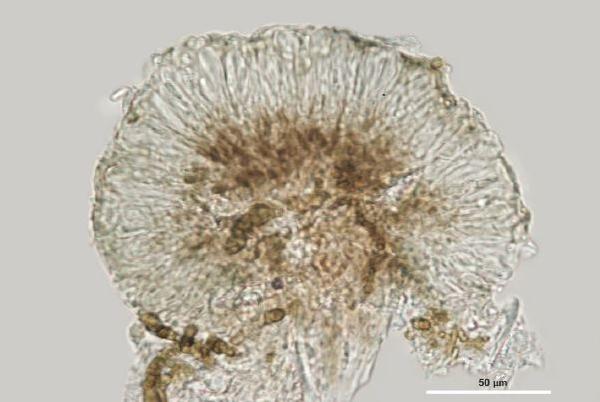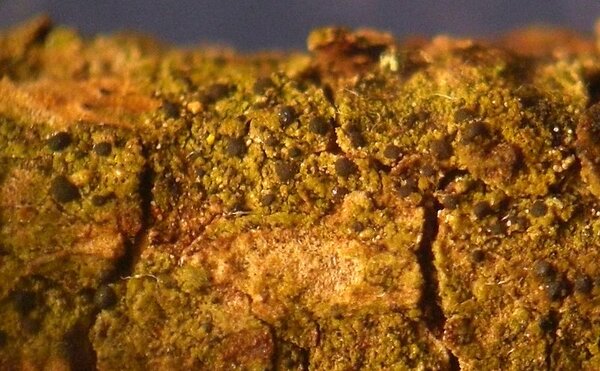Arthonia ligniariella Coppins
Lichenologist, 21: 206, 1989
Synonyms:
Distribution:
Description: Thallus crustose, endosubstratic, inconspicuous, often consisting of subgelatinous green algal clumps surrounding the apothecia. Apothecia arthonioid, black to brownish grey, rounded, convex, 0.1-0.2 mm across, up to 0.1 mm tall, without a proper margin, all parts K/I-. Epithecium dark brown, 7-10 μm high, K+ olive-brown; hymenium colourless, 25-30 μm high, I-, K/I-; paraphysoids branched and anastomosing, 1.2-1.5 μm thick, the apical cells up to 5 μm wide, with pale brown caps; hypothecium brown, 30-45 μm high, , K+ intensifying olive-brown. Asci 8-spored, clavate, semi-fissitunicate, with a large apical dome and a distinct ocular chamber, Arthonia-type, c. 25-30 x 10 μm Ascospores 1-septate, with often unequal cells, slightly constricted at septum, hyaline, narrowly clavate, 7-11(-14) x 3-3.8 μm. Photobiont chlorococcoid. Spot tests: thallus K-, C-, KC-, P-, UV-. Chemistry: without lichen substances.Note: mostly on rotting wood of stumps, occasionally on bark; an easily overlooked lichen, widespread in Western and Northern Europe, and also reported from the Swiss Alps. To be looked for in the Italian Alps.
Growth form: Crustose
Substrata: lignum
Photobiont: green algae other than Trentepohlia
Reproductive strategy: mainly sexual
Most common in areas with a humid-warm climate (e.g. most of Tyrrenian Italy)
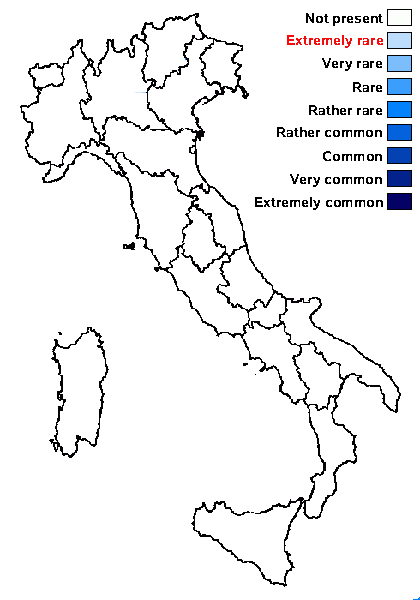
Predictive model
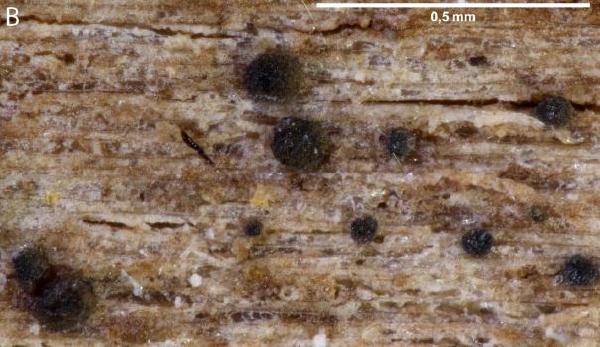
Source: Weber, L., Kantelinen, A. & Myllys, L. 2022. Arthonia ligniariella new to Finland. Graphis Scripta 34 (1): 7–11. Oslo. ISSN 2002-4495. - CC BY-4.0
Kantelinen 3463, H
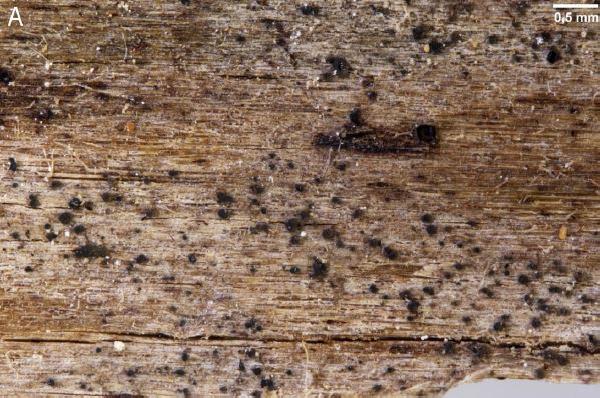
Source: Weber, L., Kantelinen, A. & Myllys, L. 2022. Arthonia ligniariella new to Finland. Graphis Scripta 34 (1): 7–11. Oslo. ISSN 2002-4495. - CC BY-4.0
Kantelinen 3463, H
Growth form: Crustose
Substrata: lignum
Photobiont: green algae other than Trentepohlia
Reproductive strategy: mainly sexual
Most common in areas with a humid-warm climate (e.g. most of Tyrrenian Italy)

Predictive model

Source: Weber, L., Kantelinen, A. & Myllys, L. 2022. Arthonia ligniariella new to Finland. Graphis Scripta 34 (1): 7–11. Oslo. ISSN 2002-4495. - CC BY-4.0
Kantelinen 3463, H

